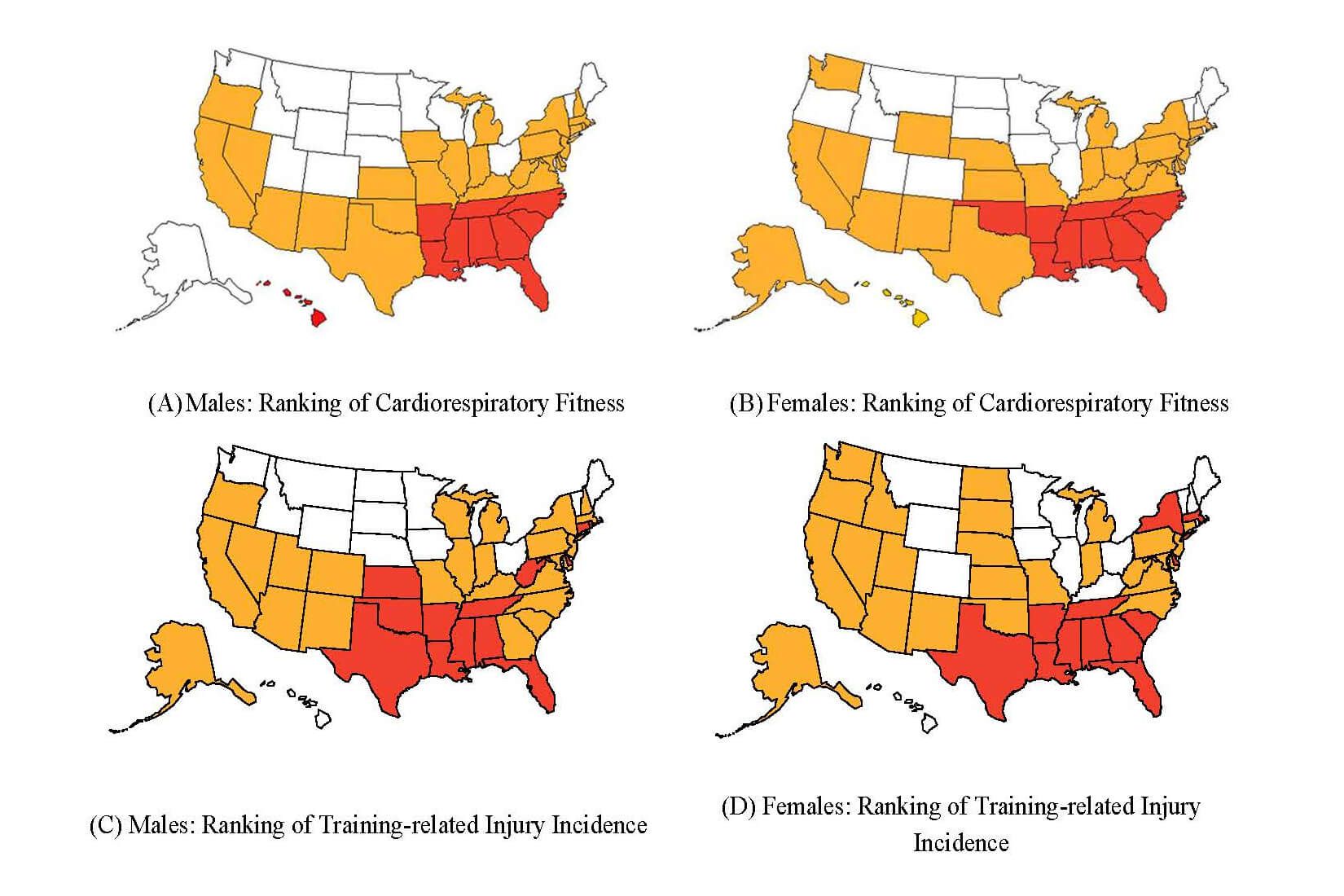CHARLESTON, SC — Military readiness and national security are threatened by high rates of obesity in some areas, with U.S. Army recruits from specific states having lower fitness and higher rates of injuries, according to a new study.
The report published in the Journal of Public Health Management and Practice calls out a cluster of 10 states from the South and Southeastern regions—Alabama, Arkansas, Florida, Georgia, Louisiana, Mississippi, North Carolina, South Carolina, Tennessee and Texas—as falling into that category.
A study team led by researchers from The Citadel, a military college in Charleston, noted that those states “produced male or female recruits who were significantly less fit and/or more likely to become injured than recruits from other U.S. states.”
The problem is that some of those states have the highest military recruitment rates. The DoD pointed out in a press release a year and a half ago, “The military attracts most of its recruits from the Southeastern part of the country. Virginia, North Carolina, South Carolina, Florida and Mississippi are fertile recruiting grounds for the services. Georgia has the highest recruit-to-population ratio in the nation. Those six states, plus Idaho, Arizona, Maine, Hawaii and Alaska, are overrepresented in the military when adjusting for differences in population.”
Yet, while the military is battling obesity among its personnel, the pool of recruits increasingly has that problem.
“Many states in the Southern region of the United States are recognized for higher rates of obesity, physical inactivity and chronic disease,” study authors wrote. “These states are therefore recognized for their disproportionate public health burden.”
The Citadel researchers set out to investigate state-level distributions of cardiorespiratory fitness, body mass index (BMI) and injuries among Army recruits to determine which, if any, states pose disproportionate threats to military readiness and national security.
To do that, the study team determined sex-specific state-level values for injuries and fitness among 165,584 Army recruits. Compared with the “most fit” state, the incidence of injuries increased by 22% (95% CI, 17-28; P < .001) in male recruits and 28% (95% CI, 19-36; P < .001) in female recruits from the “least fit” states, the researchers reported.

“The impact of policies, systems, and environments on physical activity behavior, and subsequently fitness and health, has been clearly established,” study authors concluded. “Advocacy efforts aimed at active living policies, systems and environmental changes to improve population health often fail. However, advocating for active living policies to improve national security may prove more promising, particularly with legislators. Results from this study demonstrate how certain states, previously identified for their disproportionate public health burden, are also disproportionately burdensome for military readiness and national security.”
1Bornstein DB, Grieve GL, Clennin MN, McLain AC, Whitsel LP, Beets MW, Hauret KG, Jones BH, Sarzynski MA. Which US States Pose the Greatest Threats to Military Readiness and Public Health? Public Health Policy Implications for a Cross-sectional Investigation of Cardiorespiratory Fitness, Body Mass Index, and Injuries Among US Army Recruits. J Public Health Manag Pract. 2018 Jan 9. doi: 10.1097/PHH.0000000000000778. [Epub ahead of print] PubMed PMID: 29319585.
